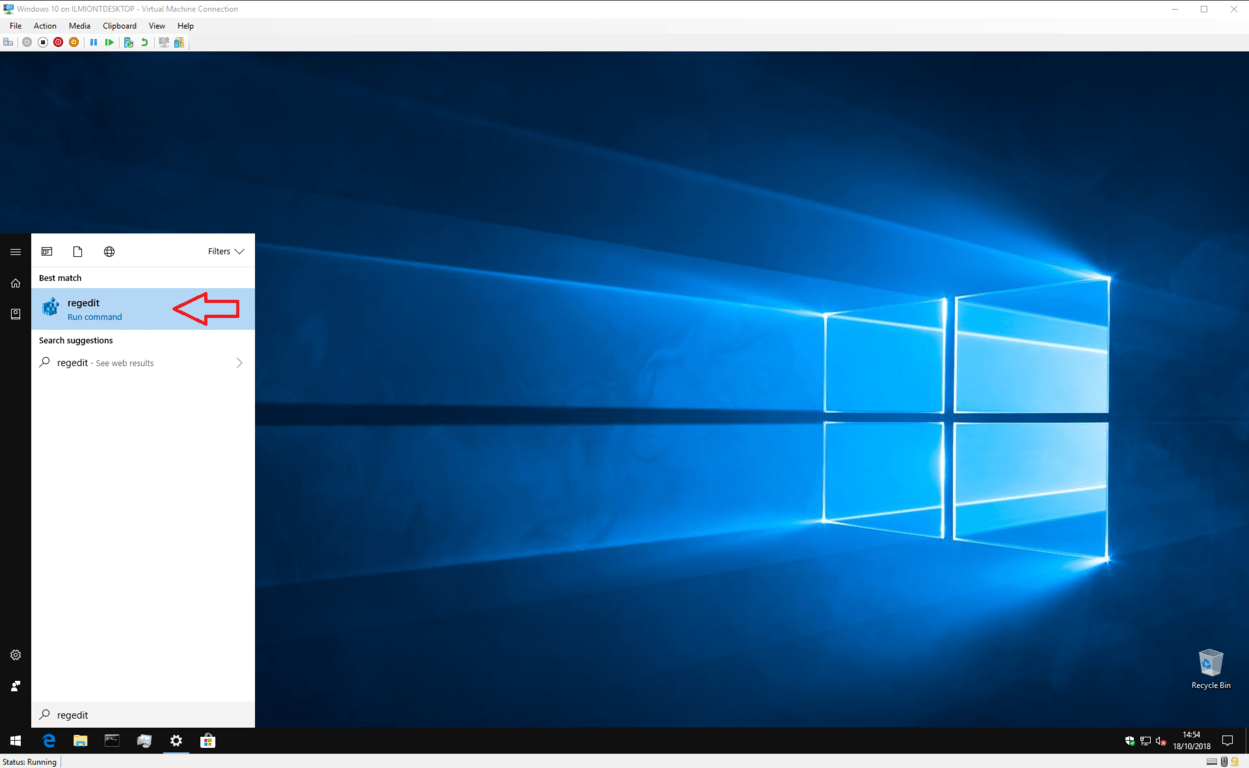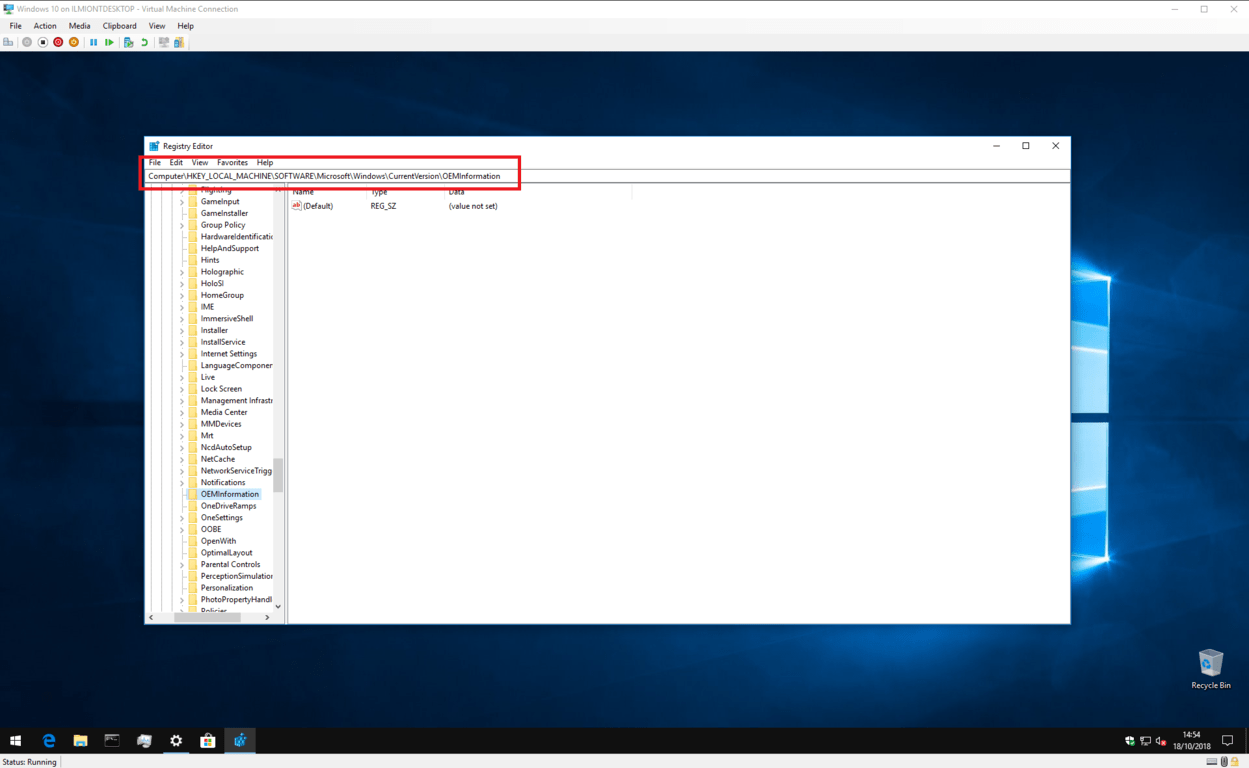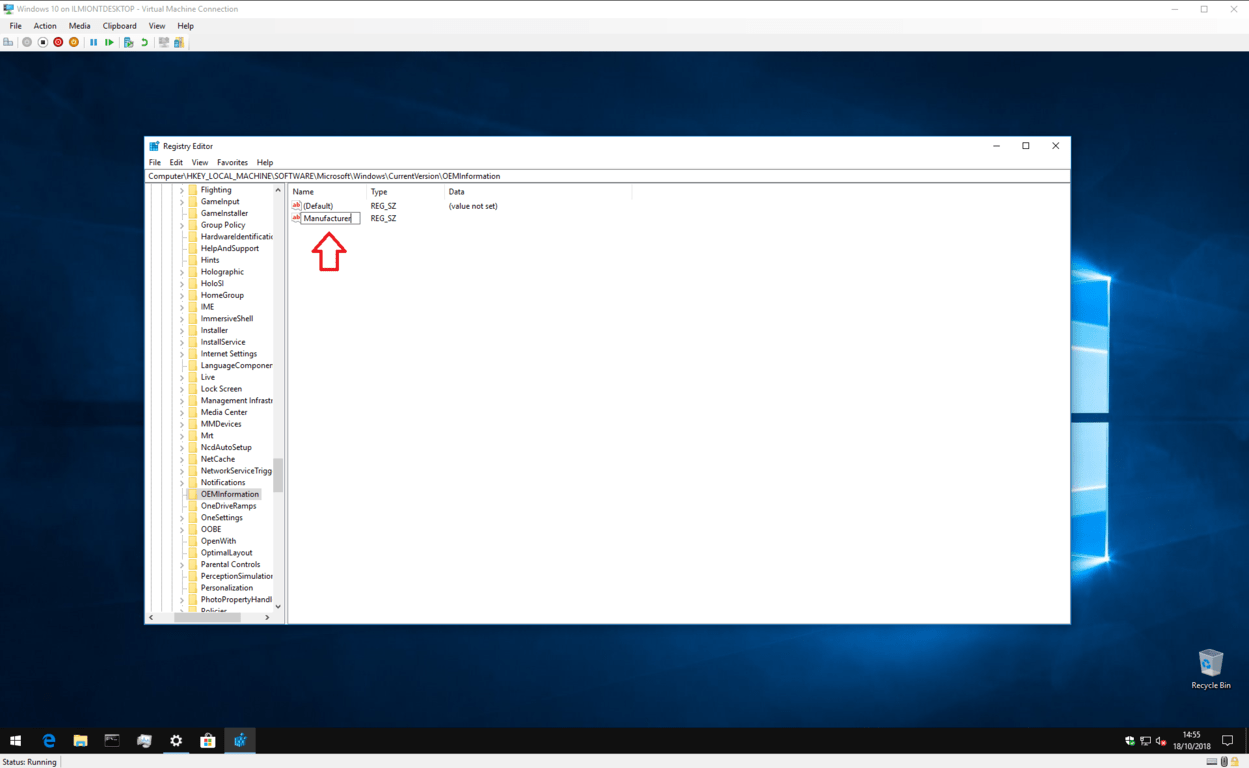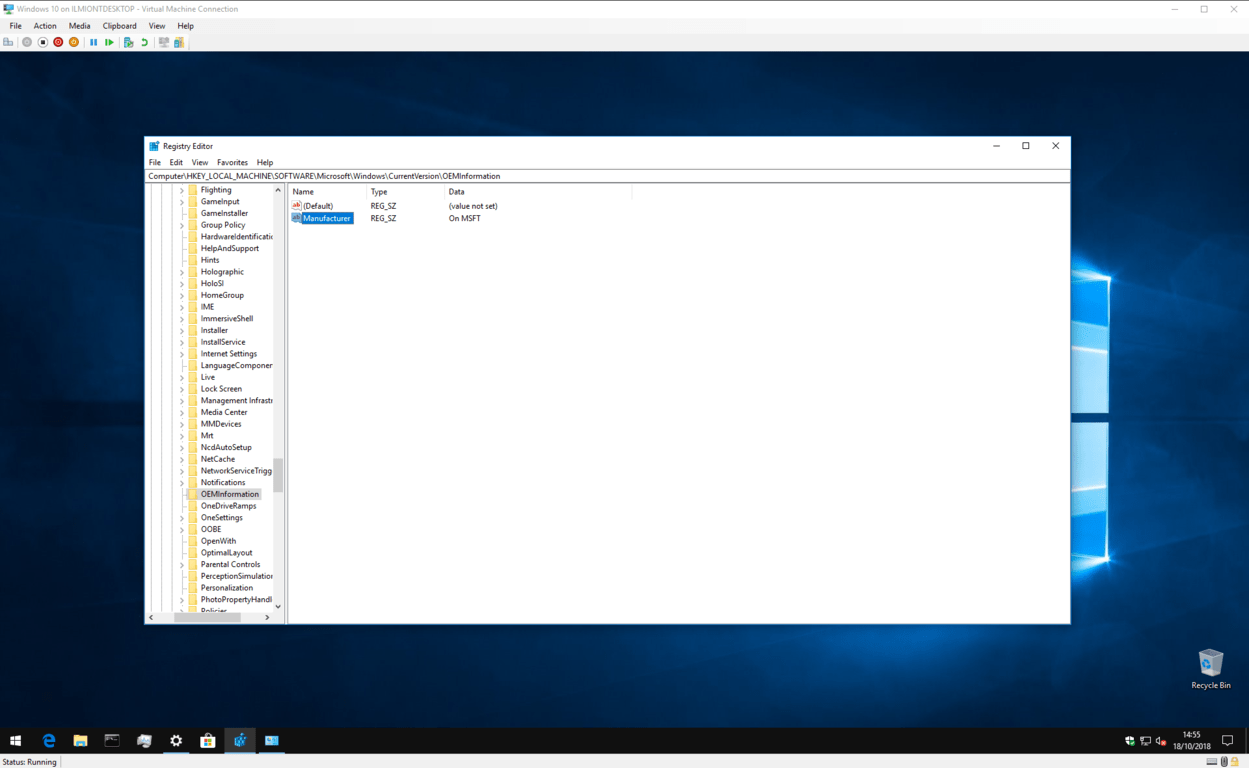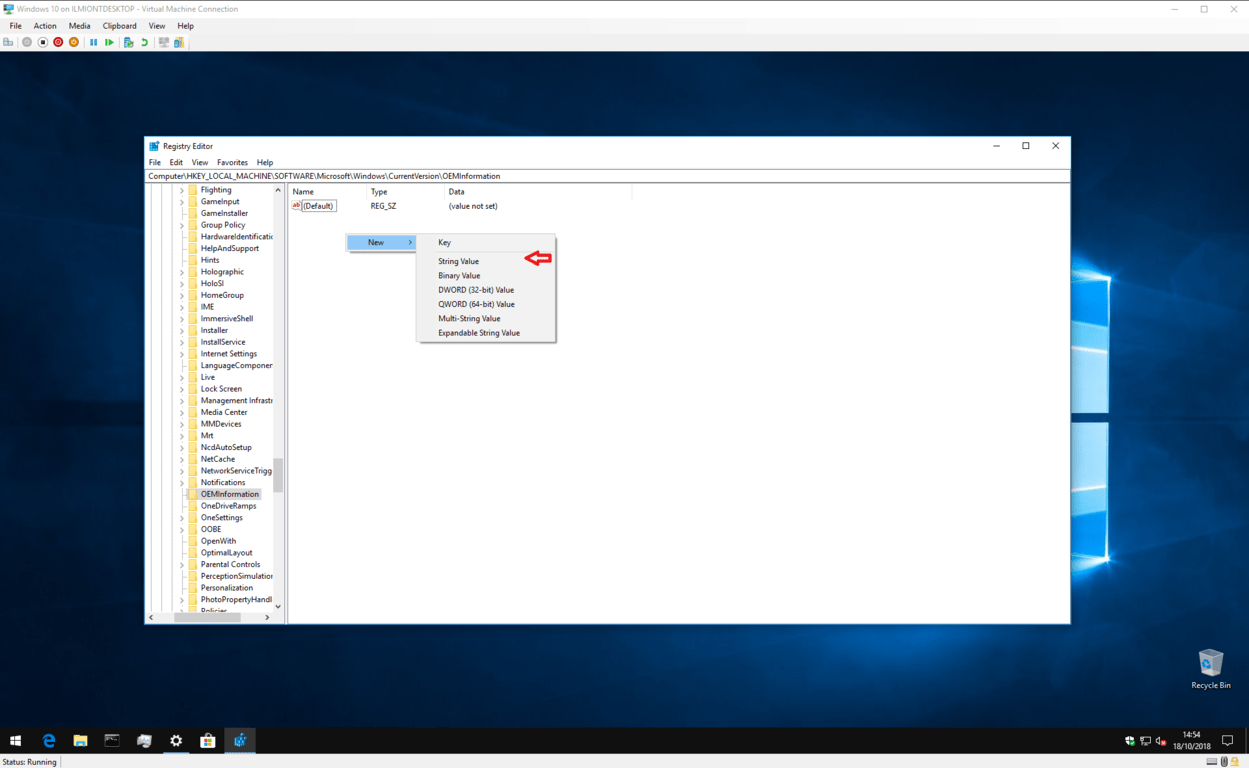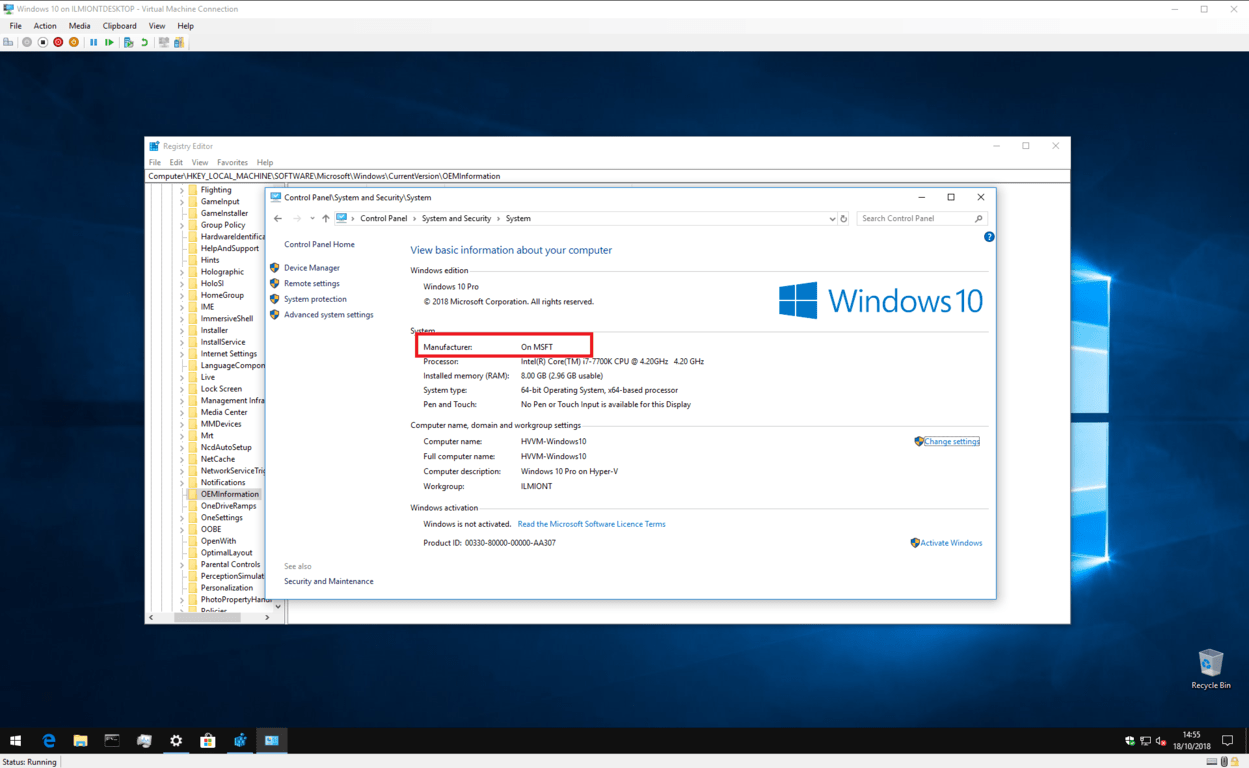How to customise your Windows 10 PC’s manufacturer information
3 min. read
Published on
Read our disclosure page to find out how can you help Windows Report sustain the editorial team Read more

Windows 10 displays information about the make, model and name of your device within the Settings app and Control Panel system page. Usually, you won’t notice anything wrong with this information. However, if you’ve just reinstalled Windows or built your own computer, you might find all the values are showing as “To Be Filled By O.E.M.”
Of course, this has no impact on the functionality of your system. But if you’re anything like this author, you want to give your new self-build PC its own identity – so read on to find out how to change these values to something more useful.
This process does involve editing the Windows Registry, so we’ll leave a standard warning here: although we don’t see how tweaking manufacturer information can negatively impact your system, this isn’t officially supported by Microsoft and it may stop working in the future. Take care when editing the registry; unintentional, malformed or misconfigured edits can cause serious trouble.
To get going, open the Registry Editor (hit the Start button and type regedit). If you’re not an administrator, you will be prompted to reauthenticate as one.
Using the address bar at the top of the window, paste or type the following key:
HKEY_LOCAL_MACHINE\SOFTWARE\Microsoft\Windows\CurrentVersion\OEMInformation
Note that older versions of Windows 10 don’t have an address bar in the Registry Editor, so you’ll need to manually navigate through the folder-like structure to find the key.
What you’ll see depends on whether your system already has manufacturer information. If it does, you should see several keys besides “(Default)” in the right pane which define different properties of your system. You can double-click these keys to edit their value after following the instructions below.
If you’ve just installed Windows and Control Panel displays your manufacturer information as “To Be Filled By O.E.M,” you’ll probably just have the sole “(Default)” key. When following the instructions below, you’ll need to create new keys for each property – right-click anywhere in the right pane and choose New > String Value. Be careful to ensure its name exactly matches that of your intended property. You can then set its value by double-clicking it.
The available properties are as follows:
- Manufacturer – The manufacturer name to display for your device
- Model – The model name to display for your device
- SupportHours – Used to display manufacturer support information
- SupportPhone – Used to display manufacturer support information
- SupportURL – Used to display manufacturer support information
- Logo – A path to a bitmap format image to use as your manufacturer “logo”; you’ll need to experiment with sizes and formats
Each of these properties is entirely optional – if you’re building your own system, you’ll probably want to omit the support-related ones.
By way of example, let’s suppose you want your PC’s manufacturer to display as “On MSFT” and none of the keys currently exist on your system.
Right-click in the registry editor window, and choose New > String Value. Name the key “Manufacturer” and then double-click it to set its value. Type “On MSFT.”
After editing the keys, you’ll be able to open Control Panel > System and Security > System to see your new information – no reboot required.

